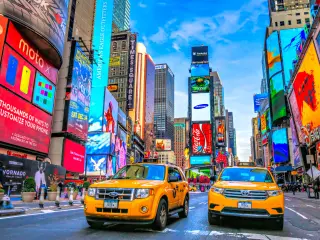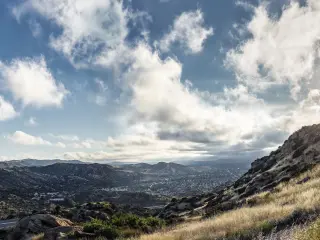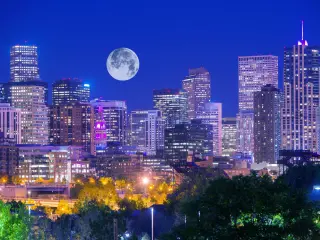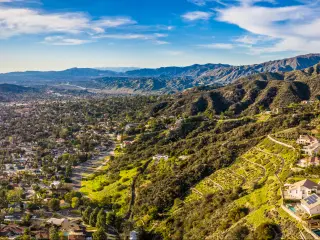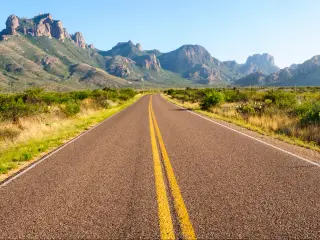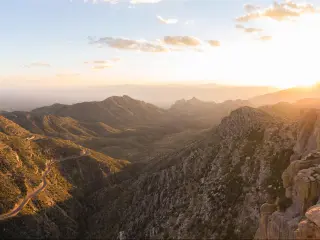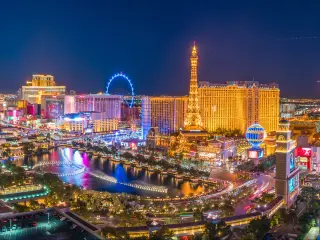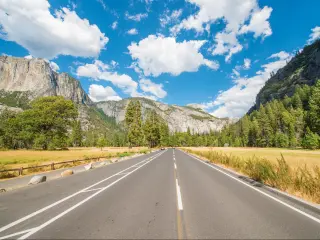What is the Easiest Way to Drive into Las Vegas?
Famous for its larger-than-life resorts, casinos, fabulous shows and glittering entertainment culture, Las Vegas is a dream destination for many travelers. It's also the perfect stop-off on an iconic American road trip as you cross Nevada's Mojave Desert.
There are several routes that you can use to drive into Las Vegas and the easiest way will depend on the direction you travel from. It's a straightforward drive across the desert, but be prepared for some congested city streets as you drive into Las Vegas.
Like any big city, the thought of driving right into the heart of Las Vegas might feel a little intimidating. Keep on reading for more information on what to expect when you drive to Las Vegas, and the easiest ways to drive into Sin City from different parts of the country.
What is the easiest way to drive into Las Vegas?
Sitting in the heart of the Mojave Desert, it's over 100 miles from the Las Vegas Valley to the nearest cities of St George in Utah and Kingman in Arizona. You should plan for at least a 4-hour drive to reach the city from most of the popular starting points.
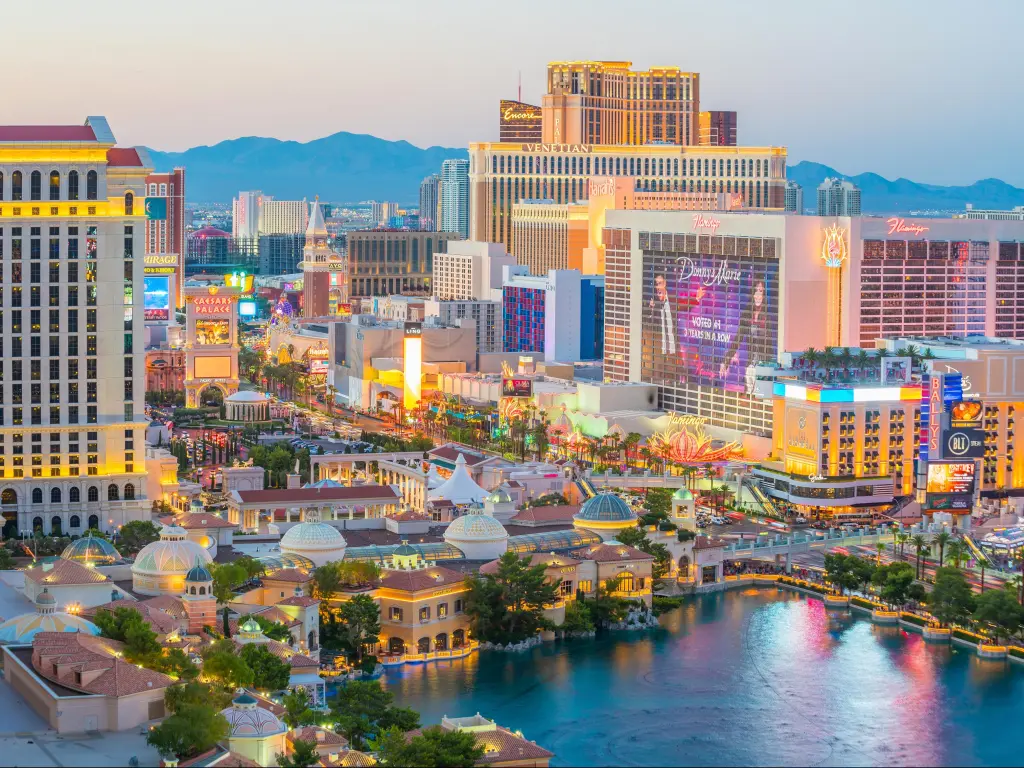
The good news is that Las Vegas is well connected to other cities via I-15, I-11/US-3, and US-95. Whether you're starting out in California, Arizona, Utah, or further afield, it's a straightforward drive to reach Sin City.
With limited options that will take you into the city center, the easiest way to drive into Las Vegas is to follow the major highways, depending on which direction you are traveling from.
The main ways to drive into Las Vegas
With its desert location, there aren't many roads to Las Vegas, so you're likely to end up on one of four routes into the city, no matter where you've started from.
Almost all travelers aim for either end of the Strip, the famous stretch of casinos and lavish hotels that runs along Las Vegas Boulevard, as they plan to drive into Las Vegas.
I-15 runs parallel to the Strip, right across the center of the city, so if your journey starts in southern California, Utah, or further to the northeast, you can simply exit the interstate and head to wherever you're staying.
Traffic can be heavy on this section of I-15, so try to avoid arriving or departing the city during rush hour between 7-9am and 4-6pm.
If you're heading from the north into Las Vegas, US-93 N is the most direct route into the city. This highway joins up with I-11 and then I-515 as it travels into the center of Las Vegas.
From the north or northwest, US-95 and US-93 N are likely to be the most direct routes to Las Vegas. Both highways join up with the interstate so that you can navigate to your final destination in the city.
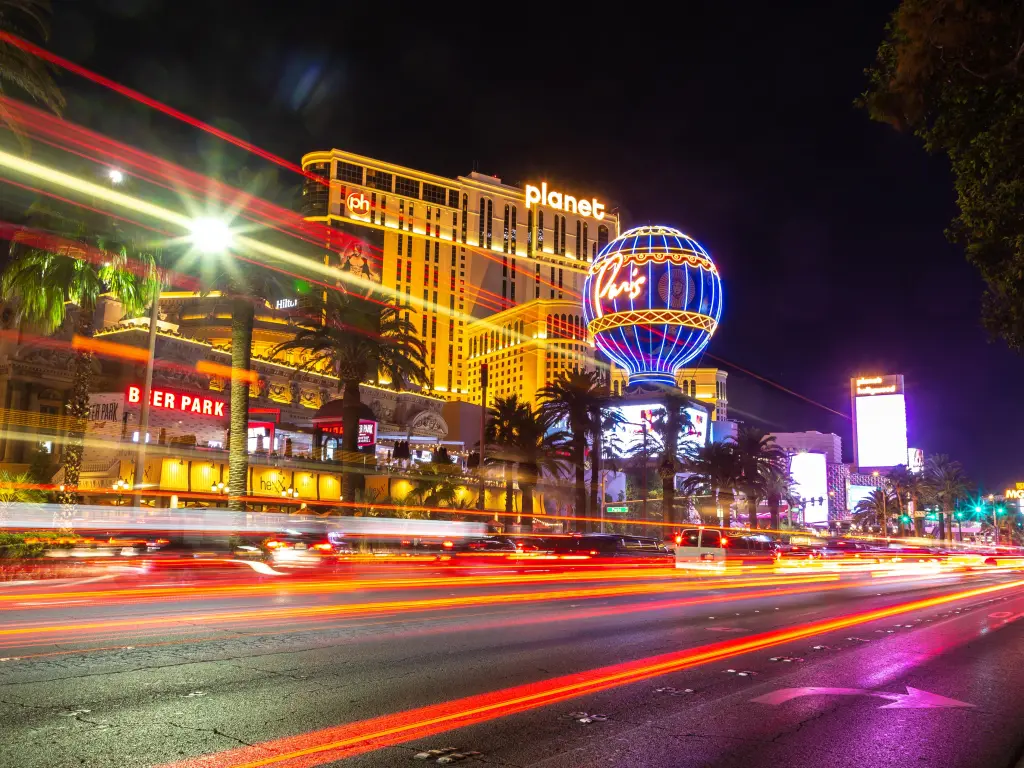
Driving into Las Vegas from nearby cities
| From | Enter via | Distance | Driving Time |
|---|---|---|---|
| Los Angeles | I-15 | 270 miles | 4 hours 15 minutes |
| Grand Canyon National Park | I-11 | 280 miles | 4 hours 30 minutes |
| Phoenix | I-11 | 300 miles | 4 hours 50 minutes |
| San Diego | I-15 | 330 miles | 5 hours |
| Salt Lake City | I-15 | 420 miles | 6 hours |
| San Francisco | I-15 | 570 miles | 8 hours 40 minutes |
| Albuquerque | I-11 | 575 miles | 8 hours 20 minutes |
| Denver | I-15 | 750 miles | 11 hours 10 minutes |
| Portland, OR | US-95 | 970 miles | 15 hours 25 minutes |
| Seattle | US-93 | 1,115 miles | 17 hours |
| Dallas | I-11 | 1,220 miles | 17 hours 40 minutes |
| Washington DC | I-11 | 2,460 miles | 36 hours |
| New York | I-15 | 2,520 miles | 37 hours |
* You can use the highlighted links above to reach our detailed guides on how to drive to Las Vegas from these cities.
A trip to Las Vegas is a popular add-on to a vacation in California. It's a relatively short drive (by US standards) and follows the interstate almost all the way.
If you're starting in Los Angeles, leave the city on I-10, then join I-15 N, which takes you all the way to Las Vegas. Alternatively, if you're traveling from San Francisco, you'll take I-5 S as far as Bakersfield before joining CA-58 east to Bairstow, connecting with I-15 N.
Journeys beginning east of Las Vegas also follow the interstate much of the way. From Denver, take I-70 southwest through Utah, then join I-15 S, which takes you to Downtown Las Vegas.
From Albuquerque, or as a detour on a Route 66 road trip, leave I-40 at Kingman, then follow US-93, which becomes I-11 at the Arizona/Nevada state border (right by the Hoover Dam).
At Henderson, continue straight ahead on I-515, which takes you to Downtown Las Vegas and the northern end of S Las Vegas Blvd.
If you're heading to Las Vegas from Arizona, you'll eventually join the Albuquerque Route to make your way to the center of Las Vegas. From Grand Canyon National Park, you just need to follow AZ-64 south onto I-40 and continue via Kingman and Henderson.Alternatively, from Phoenix, you'll follow US-93 (then I-11) all the way to Las Vegas.
Is driving into Las Vegas difficult?
The long, straight Strip and regular block system makes the center of Las Vegas fairly straightforward to navigate, but even so, there are a few things to keep in mind to help your journey go as smoothly as possible.
The main challenge you'll face will be the traffic, which is a permanent situation around Sin City. Allow enough time for your journey, especially if you're heading to Las Vegas for an event.
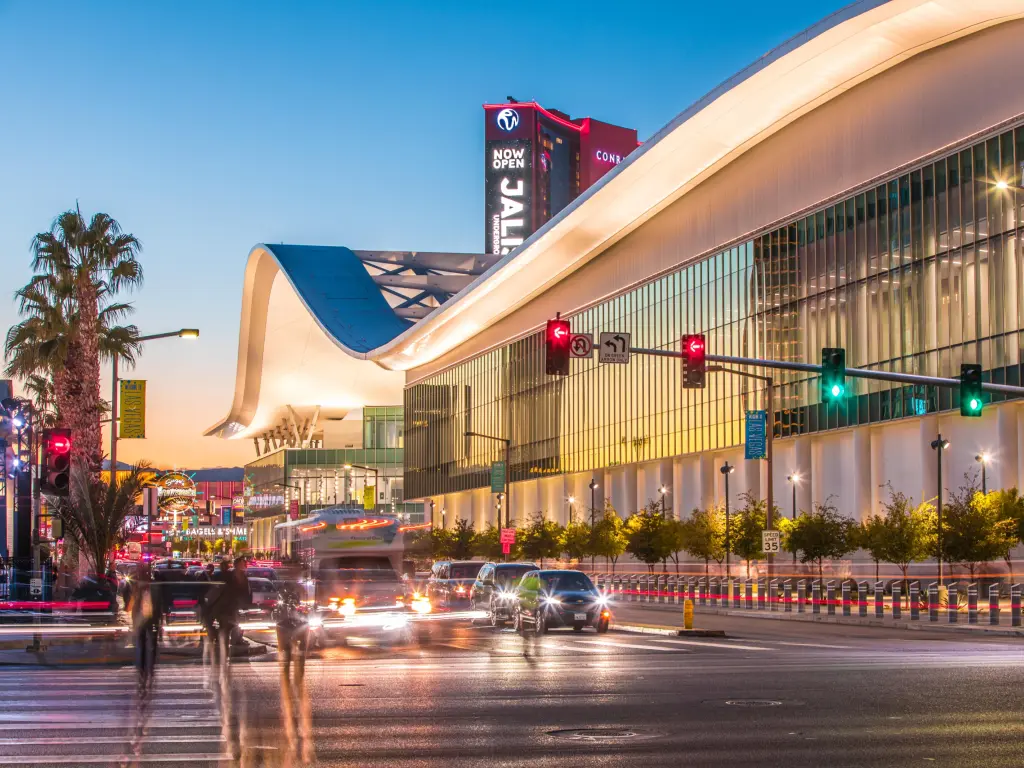
I-15, which runs through the center of Las Vegas, can be very slow during rush hour. Friday and Sunday evenings are also peak times to arrive and leave Las Vegas, so you can expect longer queues on I-15.
Even in normal traffic conditions, congestion means that it takes at least 30 minutes to drive the 4-mile-long Las Vegas Blvd. If there's a big event on, expect traffic to be even busier than normal on I-15 and the Strip.
The intersections between I-15/I-515 and I-15/I-215 are also particularly challenging whenever traffic peaks in the city.
Once you've arrived in the city, almost every hotel offers parking, including valet. There's usually a charge for this, although not as high as you'd find at smart hotels in other major cities.
As a bonus, there are no tolls on the interstate or highways around Las Vegas, although you might encounter sections of toll roads nearer the start of your journey.
Alternatives to driving into Las Vegas yourself
As iconic as a Vegas road trip feels, not every traveler has the time to drive to Sin City. Fortunately, Las Vegas is easy to reach by air via Harry Reid International Airport (known as McCarren International Airport until 2021).
Multiple airlines operate frequent routes from LA, Denver, Dallas/Fort Worth, Seattle, New York and other cities across the US.
There are also direct international flights from a few European cities, including London and Amsterdam, as well as destinations in North and South America, including Toronto, Vancouver, and Mexico City.
Even if there isn't a direct flight from your home country, you'll find regular connections from a choice of US airports.
If you'd prefer to avoid flying but don't want to drive yourself to Las Vegas, you also have the option of taking a bus to reach the city. Greyhound and Flixbus both run services to Las Vegas.
You can buy bus tickets from dozens of cities, including Los Angeles, San Francisco, Phoenix, Denver, Dallas, Atlanta, Chicago, and Seattle. Some journeys run direct, but most of the longer routes involve at least one transfer.
There are no trains to Las Vegas – you can get as close as Kingman on the Southwest Chief (which links Chicago and Los Angeles), then take onward transport or rent a car.
Depending on where you're starting your trip, flying to Las Vegas can often be the cheapest. Flights are available between LA and Las Vegas from as little as $20 (calculated at the time of writing) – but you'll have to add a lot more to that if you want to bring a bag.
Even so, the plane is usually cheaper than traveling via a long-distance bus, and much quicker!
Best time to drive into Las Vegas
You can visit Las Vegas all year round, but the desert climate means you'll have a very different experience depending on when you travel. Whenever you take your trip, midweek will be less crowded than weekends.
You won't be surprised to learn that high summer temperatures of 100 degrees Fahrenheit and above can make Las Vegas uncomfortably hot from June to September. This is considered by many to be low season in Las Vegas, and is often a cheaper time to travel.
September to May is the most popular time to visit since these are the coolest months in Las Vegas. Spring is best if you want to head out of the city to hike, for example, in Valley of Fire State Park.
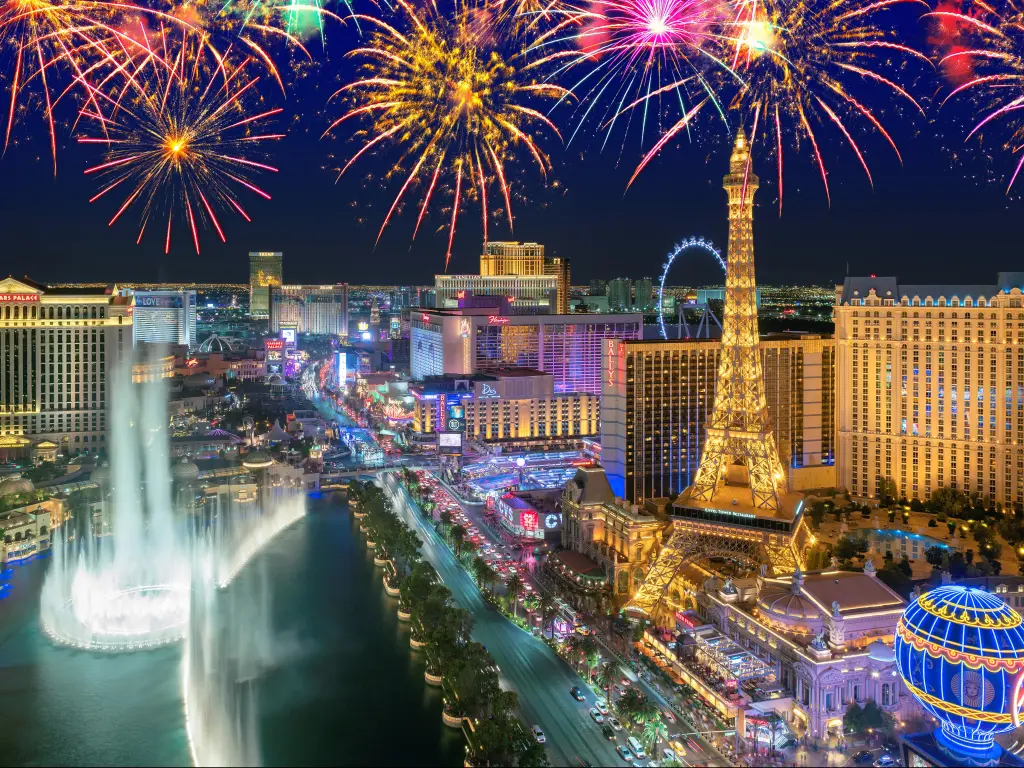
It's warm enough to spend time outdoors in the city. However, many of the outdoor pools and desert beaches will be closed until temperatures start to ramp up in May.
From December to February, temperatures sit around 60 degrees Fahrenheit in the daytime and often drop below freezing at night. You can head to Las Vegas to experience its many indoor attractions without the harsh summer heat and soaring prices of peak season.
You won't experience winter road closures nearby, but you'll need to take care on the journey, as even in sunny Arizona, you can hit icy conditions on the interstate.
Major events and conventions also peak in January, so you should expect big crowds even in this quieter season. Superbowl, Valentine's Day, spring break, Thanksgiving, Christmas, and New Year are also popular times to visit Las Vegas, bringing extra visitors but also memorable events and celebrations.
Things you need to know about driving into Las Vegas
By now, you've found out the best ways to reach Las Vegas from different parts of the United States and how long it might take you to drive there.
Here are a few more key points to keep in mind when you're driving to Las Vegas so that you can focus on the fabulous trip ahead without being caught out along the way:
- Speed limits vary between 65 and 70 MPH on the interstate and highway.
- Once you exit the interstate, speed limits drop to between 25 and 45 MPH – keep an eye out for signage as you travel through the city.
- There are some free parking locations at either end of the Strip, and most of the hotels and casinos have parking available for guests at reasonable rates.
- You're surrounded by casinos and bars but don't be tempted to drink and drive – and remember that the legal limit is close to 0 if you're under 21 (although the legal drinking age is also 21).
- Always pull into the next lane to overtake a stopped emergency vehicle. Pull over to the right if an emergency vehicle needs to pass you.
- U-turns are permitted in Las Vegas where indicated by signage.
- You can turn right at a red light provided you stop first and that the road you're turning into is clear.
- Las Vegas is walkable if the weather isn't too hot. There are sidewalks and elevated crosswalks all along the Strip.
- Traffic is likely to be busy, so it won't be a relaxing walk, but with slow traffic all along the Strip, walking can be the quickest way to get around the city.
- Distances between the different attractions can be deceptively large, so take a good look at your map before setting out.
- If you don't want to drive or walk along the busy Strip, you can hop onto the Las Vegas Monorail and the Deuce tourist bus to reach your destination.
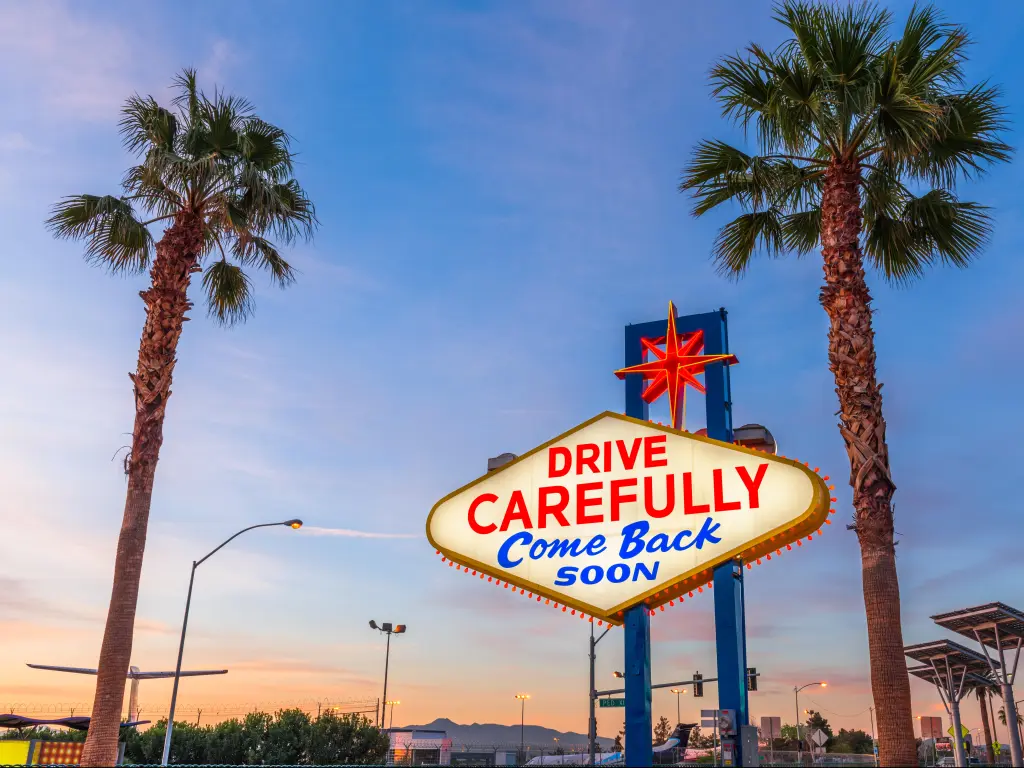
With all this in mind, driving to Las Vegas is a great option as long as you're comfortable navigating through a new place and prepared to wait in traffic at times.
Having your own car also means you can drive between different destinations once you arrive in Las Vegas if you are looking for more adventure!

